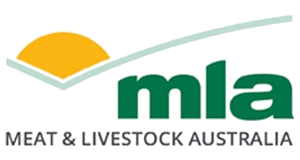Pasture assessment: effects on livestock performance
04 January 2016
In this opinion piece, NSW More Beef from Pastures State Coordinator John Francis, of Holmes Sackett, continues his discussion about pasture assessment and how it can affect livestock performance in the long run.
Several questions arose during a Farm300 meeting I held in February regarding the likely weight gain of weaner cattle grazing different pastures and the influence of digestibility. The computer program GrazFeed was used to help answer these questions.
GrazFeed explained
GrazFeed is a decision support tool developed by CSIRO to help graziers improve the profitability of livestock production through more efficient use of pastures and supplementary feeds, while ensuring that animals meet their recommended nutritional requirements.
The recommended nutritional requirements for cattle in Australia, including energy and protein, are described in the report Nutrient Requirements of Domesticated Ruminants, published by CSIRO in 2007.
In practice, however, it can be difficult to determine if cattle can meet their requirements for energy and protein from pasture due to the difficulty of estimating the amount of food eaten and the quality of the diet that animals are able to select from a particular pasture. GrazFeed overcomes these problems by taking into account:
- the type of animal (and the corresponding recommended nutritional requirements)
- the availability and quality of pasture
- selective grazing
- interaction with supplementary feeds (eg the substitution of supplements for pasture).
Digestibility is the key
According to the GrazFeed program and as shown in Table 1, calf liveweight is 0.26kg/day higher when calves are modelled to graze green pastures of 70% digestibility, compared to green pastures of 65% digestibility. Calves are also estimated to consume 9.5% more, even though the same amount of dry matter is available (1,500kg DM/ha).
When the combination of a greater mass of pasture is available, along with the 5% improvement in digestibility (ie 1,700kg/ha with 70% digestibility), intake increases by 17% and liveweight gain by 100%.
Table 1: Effect of available yield/biomass and digestibility on feed intake and liveweight gain in 220kg calves (Source: GrazFeed).
|
Green DM (kg/ha) |
Green Digestibility (%) |
Intake (kg DM/head/day) |
Gain (kg/day) |
|
1500 |
65 |
5.56 |
0.44 |
|
70 |
6.09 |
0.70 |
|
|
1700 |
65 |
5.93 |
0.53 |
|
70 |
6.51 |
0.90 |
In summary, weaned calf liveweight is more sensitive to a 5% difference in digestibility than a slight difference in the amount of feed on offer, measured as available dry matter. While the amount of feed on offer will influence the amount of feed the weaners consume to a point, improved digestibility will also enable calves to consume more pasture per day.
The right time to wean
Another question asked by the group was whether calves should be weaned and when this should occur. The answer depends on the condition of the cows, as well as the digestibility and availability of feed on the property that may be directed to the weaners.
A comparison of the performance of weaned and unweaned calves on a particular pasture can demonstrate how early weaning can benefit their growth.
Based on GrazFeed modelling, if cows with unweaned calves graze a pasture with a green component of 75% (1,500kg DM/ha and 65% digestibility) and the remainder is dead matter (500kg DM/ha and 40% digestibility), the calves would gain 0.18 kg/day. If the calves were weaned and grazed on the same pasture they would gain 0.44 kg/day.
This example demonstrates the importance of understanding feed quality and availability, prioritising quality feed to meet the requirements of animals and making objective assessments when determining the best time to wean.
Using GrazFeed accurately
Some guidelines for improving the accuracy of projections provided by GrazFeed include:
- GrazFeed requires the weight and digestibility of green and dead pasture components to be entered. Separating pasture cuts into green and dry components prior to drying will improve the accuracy of the modelled outputs. Projected livestock weight gains and other livestock performance measures are highly dependent on the accuracy of the inputs.
- Feed testing pasture cuts will assist in improving the accuracy of the modelled outputs, as it will provide objectivity regarding pasture digestibility.
- CSIRO recommends that users of GrazFeed undertake training in pasture assessment through programs such as PROGRAZE®.
MLA’s Feed Demand Calculator (FDC) is another tool developed specifically for producers to determine feed supply and demand over a twelve-month period. Training videos about using the FDC are available online.
Further information
- John Francis, NSW MBfP State Coordinator
- Access more information about GrazFeed
- Module 2: Pasture growth
- Module 3: Pasture utilisation including various pasture assessment tools
- Feed Demand Calculator


